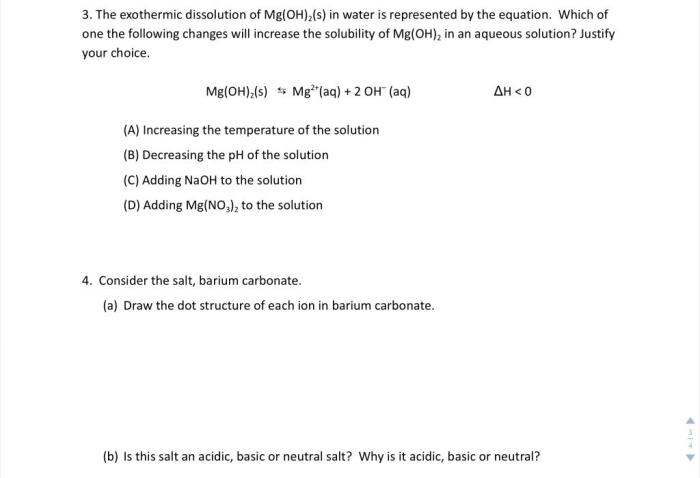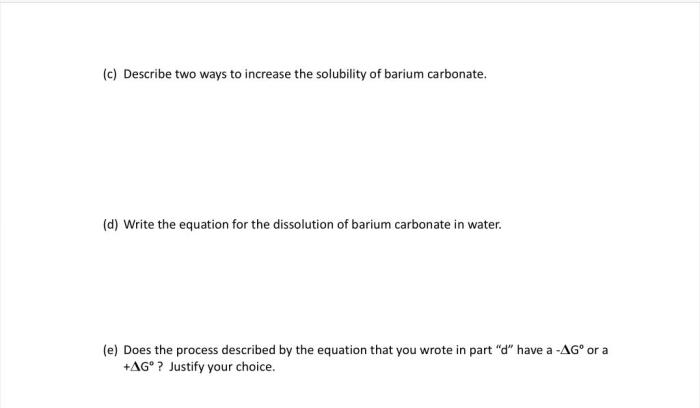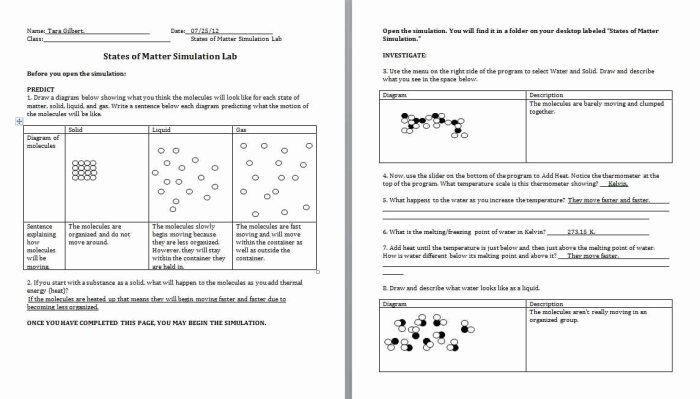The exothermic dissolution of mg oh 2 – The exothermic dissolution of Mg(OH)2 presents a captivating exploration into a chemical process that unveils the intricacies of thermodynamics and its practical applications. This phenomenon, characterized by the release of heat, offers a unique perspective on the behavior of matter and its potential in various fields.
Delving into the depths of this reaction, we embark on a journey to unravel the factors influencing its dissolution rate, uncover its diverse applications, and delve into the safety considerations surrounding its handling. Through experimentation and analysis, we illuminate the practical implications of this exothermic process, providing valuable insights for researchers and practitioners alike.
1. Overview of the Exothermic Dissolution of Mg(OH)2

The exothermic dissolution of magnesium hydroxide [Mg(OH)2] is a chemical reaction that occurs when Mg(OH)2 dissolves in water, releasing heat. The reaction is represented by the following chemical equation:
Mg(OH)2(s) + H2O(l) → Mg2+(aq) + 2OH-(aq) + Heat
This reaction is exothermic, meaning that it releases heat into the surrounding environment. The enthalpy change (ΔH) for this reaction is negative, indicating that the products are more stable than the reactants.
2. Factors Affecting the Dissolution Rate
Several factors can affect the dissolution rate of Mg(OH)2 in water, including:
- Temperature:Increasing the temperature increases the kinetic energy of the reactants, leading to a faster dissolution rate.
- Surface area:Increasing the surface area of Mg(OH)2 exposes more of the solid to the solvent, increasing the number of collisions between the reactants and speeding up the reaction.
- Agitation:Stirring or agitating the solution increases the frequency of collisions between the reactants, leading to a faster dissolution rate.
3. Applications of the Exothermic Dissolution of Mg(OH)2
The exothermic dissolution of Mg(OH)2 has several industrial applications, including:
- Water treatment:Mg(OH)2 is used as a coagulant to remove impurities from water by forming insoluble precipitates that can be easily removed.
- Wastewater treatment:Mg(OH)2 is used to neutralize acidic wastewater and remove heavy metals by forming insoluble hydroxides.
- Fire retardants:Mg(OH)2 is used as a flame retardant in various materials, such as plastics and textiles, by releasing water vapor and absorbing heat during combustion.
4. Safety Considerations
The exothermic dissolution of Mg(OH)2 can pose certain hazards, including:
- Inhalation:Inhalation of Mg(OH)2 dust can cause respiratory irritation.
- Skin contact:Contact with Mg(OH)2 can cause skin irritation and burns.
- Eye contact:Contact with Mg(OH)2 can cause eye irritation and burns.
To minimize these risks, proper handling, storage, and disposal procedures must be followed.
5. Experimental Investigation, The exothermic dissolution of mg oh 2
To investigate the exothermic dissolution of Mg(OH)2, an experiment can be designed to measure the temperature change during the reaction. The following steps can be followed:
- Measure the mass of a known amount of Mg(OH)2.
- Add the Mg(OH)2 to a known volume of water in a calorimeter.
- Record the initial temperature of the solution.
- Stir the solution and record the temperature at regular intervals.
- Plot the temperature change over time.
The results of the experiment can provide insights into the factors affecting the dissolution rate of Mg(OH)2 and the exothermic nature of the reaction.
FAQ Overview: The Exothermic Dissolution Of Mg Oh 2
What is the chemical equation for the exothermic dissolution of Mg(OH)2?
Mg(OH)2(s) + 2H+(aq) → Mg2+(aq) + 2H2O(l) + heat
What factors affect the dissolution rate of Mg(OH)2?
Temperature, surface area, and agitation
What are some industrial applications of the exothermic dissolution of Mg(OH)2?
Water treatment, wastewater treatment, and fire retardants
What safety considerations should be taken when handling Mg(OH)2?
Proper handling, storage, and disposal procedures are essential to minimize risks associated with this reaction.


